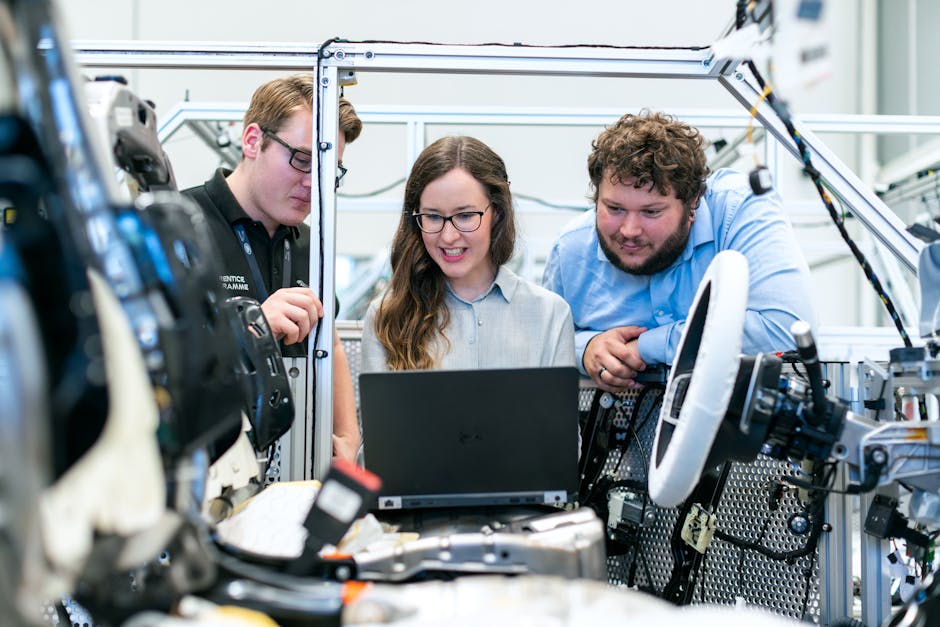Automation Takes Center Stage in 2025: n8n and the Rise of Low-Code/No-Code Platforms
The year 2025 is witnessing a dramatic surge in the adoption of automation technologies across various sectors, driven largely by the accessibility offered by low-code/no-code platforms. This shift is evident in the growing popularity of tools like n8n, an open-source workflow automation tool gaining traction among technical users. This trend indicates a significant departure from traditional, highly specialized automation solutions, opening new avenues for efficiency and innovation.
The n8n Phenomenon: Open Source Automation for the Masses
n8n, a free and open-source workflow automation tool, is experiencing a rapid increase in adoption throughout 2025. Its popularity stems from its intuitive interface and its capacity to integrate with a wide array of applications and services, allowing users to create complex automated workflows without needing extensive coding knowledge. This accessibility is a key factor in its appeal to both individual developers and large organizations alike. The open-source nature further contributes to its growth, fostering a vibrant community of contributors and users.
n8n’s Impact on Business Efficiency
The adoption of n8n and similar platforms is having a significant positive impact on business efficiency. Companies are leveraging these tools to automate repetitive tasks, streamlining workflows, and freeing up employees to focus on higher-value activities. The resulting increase in productivity translates directly to cost savings and improved operational efficiency, contributing to increased profitability. This trend is particularly pronounced in sectors reliant on data processing and integration.
Low-Code/No-Code: Democratizing Automation
The increasing prevalence of low-code/no-code platforms like n8n represents a significant democratization of automation technology. Historically, building automated workflows required specialized programming skills, limiting access to a small pool of highly skilled developers. Now, individuals with varying technical expertise can create and implement automation solutions, extending its benefits across a wider range of applications. This broader adoption is further amplified by the increasing availability of user-friendly interfaces and extensive online resources.
The Implications for the IT Workforce
This shift towards user-friendly automation tools has implications for the IT workforce. While some fear job displacement, the reality is more nuanced. While routine tasks are becoming automated, the demand for individuals who can design, implement, and maintain complex automation systems is growing. This requires a workforce skilled in understanding workflows, integrating various systems, and troubleshooting potential issues. The focus is shifting towards higher-level skills and strategic thinking rather than rote coding.
Challenges and Limitations of Low-Code/No-Code Platforms
Despite the significant advantages, low-code/no-code platforms like n8n also present certain challenges. Security concerns remain a primary consideration, as the ease of use can also make systems vulnerable to misuse or attack. Scalability is another factor; while suitable for many applications, these platforms may not always be able to handle the demands of extremely large-scale operations. Furthermore, the reliance on pre-built integrations limits flexibility in certain contexts, potentially requiring custom development for highly specialized needs.
Addressing the Challenges: Future Developments
To address these limitations, the field is witnessing significant development in enhancing security features, improving scalability, and expanding integration capabilities. Furthermore, the open-source nature of many platforms fosters community-driven development, leading to rapid improvements and additions based on user feedback and real-world applications. This continuous evolution ensures these tools remain relevant and effective in an ever-changing technological landscape.
The Future of Automation: A Hybrid Approach
The future of automation in 2025 and beyond will likely be characterized by a hybrid approach. While low-code/no-code platforms are revolutionizing accessibility, complex automation tasks requiring bespoke solutions will continue to rely on traditional coding techniques. This collaborative model combines the ease of use and broad accessibility of low-code/no-code solutions with the power and flexibility of custom-built systems. This dynamic interaction will drive further innovation and efficiency gains across diverse sectors.
Key Takeaways and Predictions for 2025:
- Increased adoption of low-code/no-code platforms: A significant increase in companies utilizing platforms such as n8n is expected throughout the remainder of 2025.
- Shift in IT skill requirements: The demand for skills in workflow design and system integration will increase, while the demand for purely coding-based roles may plateau or decline slightly.
- Enhanced security and scalability: Continuous developments focusing on improved security and scalability of low-code/no-code platforms are anticipated, addressing current limitations.
- Greater integration with AI/ML: The integration of artificial intelligence and machine learning capabilities within automation platforms is expected to accelerate, offering more advanced and adaptable automation solutions.
- Growth in the open-source community: Further growth of the open-source community around platforms like n8n will drive innovation, ensuring broader applicability and improvements based on collective user input.
Conclusion: A Paradigm Shift in Automation
The year 2025 marks a pivotal moment in the evolution of automation technology. The rise of low-code/no-code platforms like n8n is democratizing access to powerful automation tools, driving significant improvements in efficiency and productivity across various industries. While challenges remain, the ongoing development and community-driven improvements are addressing limitations and paving the way for a more collaborative and efficient future for automation. The trend indicates a sustained shift towards a more accessible and widespread adoption of automation technologies, shaping the technological landscape for years to come.

